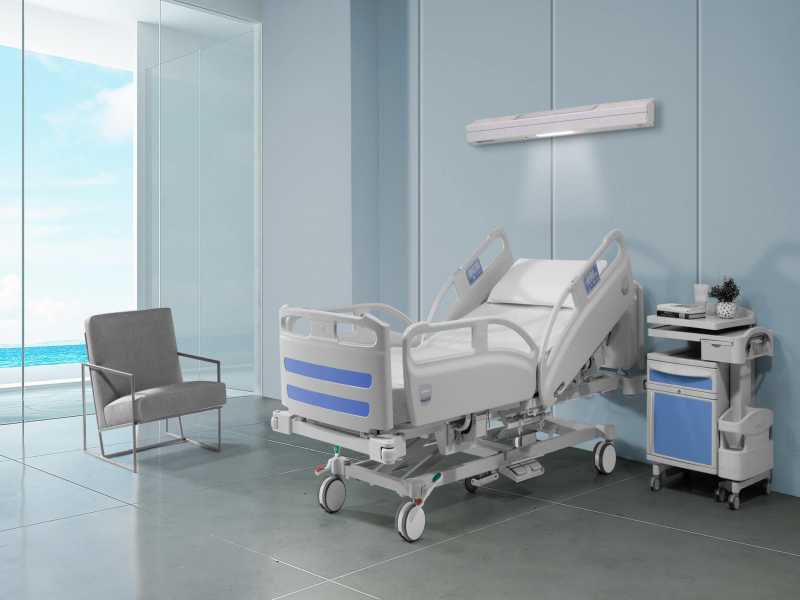Living with an LVAD requires significant adjustments, and understanding what you can expect from daily life after LVAD treatment is important. It’s normal to feel anxious or overwhelmed; however, knowing about LVADs will help to make this transition smoother.
In this article, we’ll discuss what changes to expect when living with an LVAD and provide information on how it can improve your quality of life. Read on to learn about LVADs and what you can expect from daily life after LVAD treatment in India.
What is LVAD?
LVAD stands for Left Ventricular Assist Device. LVADs are devices that help give the heart extra power to pump blood when it is weak or damaged. LVADs help patients with end-stage heart failure, meaning they cannot pump enough blood on their own. They can even be used as a bridge to transplants or for long-term management of heart failure. LVADs in India are usually implanted surgically, and patients should expect to stay in the hospital for several days afterward.
Benefits of LVAD Treatment
The various benefits of LVAD treatment include:
- LVADs can provide a powerful and reliable alternative to the failing heart, allowing patients to experience improved quality of life.
- LVADs help reduce symptoms associated with end-stage heart failure, including reducing shortness of breath and fatigue while increasing strength and energy levels.Benefits of LVAD Treatment
- They can reduce the need for other treatments, such as medications and hospitalizations.
- LVADs can provide long-term support that can last months or years, depending on the patient’s condition and needs.
- They also positively affect the quality of life by restoring physical activity, enabling patients to engage in activities they may not have been able to do previously.
Read Blog: Best Diet Plan After Heart Bypass Surgery
LVAD Treatment and How it Works
LVADs are made up of two pumps, one located on either side of the heart. The LVAD pump is connected to the left ventricle and helps provide extra power to the heart by pushing oxygen-rich blood out into the aorta. LVADs work in the following manner:
- LVADs are usually implanted surgically, and patients should expect to stay in the hospital for several days afterward for monitoring by the medical team.
- LVAD surgery is done by a specialist team that includes cardiac surgeons, anesthesiologists, and cardiologists. The LVAD is inserted into the heart’s left ventricle through a small incision in the chest wall. The LVAD pump is attached to a power source outside the body.
- After LVAD implantation, patients must take antibiotics to prevent infection or blood thinners for reducing clotting risks associated with LVADs. In addition, lifestyle changes such as eating healthy and exercising regularly are important for LVAD patients to ensure good LVAD function.
- They are monitored regularly through scheduled follow-up visits with their healthcare team, and adjustments can be made to the LVAD pump depending on the patient’s needs.
- With proper care and maintenance, LVADs can help improve quality of life and allow patients to live healthier lives.
- LVADs can extend life expectancy in some patients, although it is important to understand that LVADs are not a cure for heart failure.
Daily Life with LVAD
Daily life with LVAD treatment in India requires adjustments. LVADs are designed to improve the quality of life.
LVAD patients should expect some lifestyle changes, including the following:
- LVAD patients must take precautions to ensure their LVAD is functioning properly, such as avoiding activities that put too much strain on the device or might lead to infection.
- LVADs may require more frequent check-ups with a healthcare team than other treatments, and LVAD patients should know of any changes in LVAD performance so they can report them to their physician promptly.
- LVADs can potentially affect day-to-day activities like exercise, showering, and sleeping patterns; however, they do not have to limit these activities too much if appropriate care is taken.
- LVAD patients may need to adjust their diet and lifestyle to ensure LVAD function. Batteries can power LVADs, but LVAD patients may need to keep the LVAD plugged into an electrical outlet during certain activities.
- They must always be kept clean of dirt and debris, and regular maintenance is important for ensuring LVAD performance and longevity.
- LVAD patients should seek support from family, friends, and other healthcare team members to adjust to life with an LVAD. With proper care, LVADs can help improve quality of life and allow individuals to live healthier lives with heart failure.
Conclusion
Living with LVADs in India can be challenging, but LVADs offer many potential benefits to patients with heart failure. LVAD treatment is becoming more accessible, and LVADs can potentially extend life expectancy in some cases.
However, LVADs are not a cure for heart failure and require careful monitoring and regular maintenance to ensure optimal performance. LVAD patients should seek the support of family, friends, and other members of their medical team as well as familiarise themselves with LVAD care instructions. It will help them adjust to life with LVAD while still experiencing improved quality of life.
Read More Blogs: What you need to know about Post-herpetic neuralgia pain?
Here is everything you need to know about managing Rheumatoid Arthritis.
Drinking enough water each day could help prevent heart failure
Left ventricular assist devices can improve survival and quality of life.
